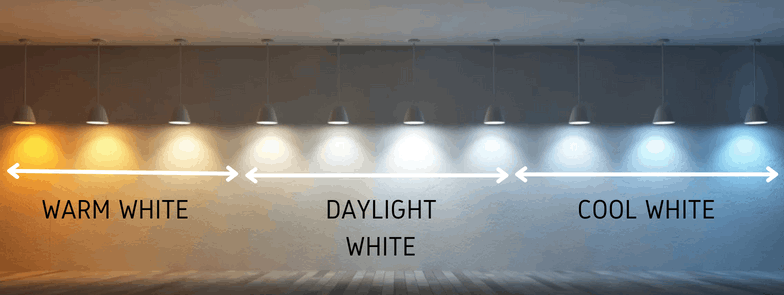What are the benefits of upgrading to LED lighting?
Upgrading your lighting to LED bulbs is more than just the latest trend - it can provide real, tangible benefits for homeowners and businesses. By replacing traditional incandescent, halogen or compact fluorescent lamps (CFL) light bulbs with LEDs you'll be able to take advantage of energy savings, reduce electric bills and enjoy a longer bulb life compared to other conventional options.
LED lights have been proven to eclipse all others time and again, in every aspect! Let’s go through the top 10 benefits you can reap by upgrading to LED lighting.

What is an LED light?
LED stands for light emitting diodes. So, how do they work? Basically, when an electrical current flows through a microchip, the tiny LEDs are illuminated and produce the light we see.
LEDs are the cornerstone of modern lighting, converting electricity into brilliant light with remarkable efficiency. They’re a wise choice for anyone looking to reduce their lighting costs. Not only do these bulbs use less energy but they also emit bright light suitable for all kinds of applications - from domestic homes, outdoor areas and commercial buildings. Additionally, making the switch to LED will benefit your wallet as well as our environment: with LED bulbs, everyone wins.
Why is upgrading to LED so important?
#1 Energy efficiency
LED light bulbs are a great way to save some dollars on your energy bills. With an average of 80% less energy usage compared to incandescent lights, halogens and CFLs, LEDs help cut costs and conserve power.
#2 Environmentally safer
It's estimated that almost half of our carbon footprint is caused by electricity consumption, with 25% coming solely from lighting. LED bulbs can use up to 90% less power than regular bulbs; this simple change could significantly reduce your CO2 emissions and lessen your environmental impact.
LED lighting isn't only kind to the environment when in use, its construction process is also eco-friendly. Unlike other traditional sources like fluorescent and mercury vapour lights that contain hazardous materials such as mercury, LED bulbs do not require any special treatment at their end of life - making them a safe option for you and your planet.
#3 Lifespan
LED lights bring us years of light and energy efficiency, but how long do they actually last? The average lifespan of an LED is typically, on average, up to 50,000 hours.
That’s about 50 times longer than an incandescent light, 20+ times longer than a halogen and 8-10 times longer than a typical CFL energy saving bulb.
Switching on LED bulbs 8 hours per day means you won’t need to change a bulb for over 11 years! Now that’s impressive efficiency.
#4 No heat or UV emissions
Have you ever tried to replace an incandescent light bulb as soon as it goes out? If so, then you know how hot they can get when in use. While traditional lighting sources like these expend up to 90% of their energy for heat production and just 10% on providing actual illumination, LED lights stay cool since nearly all the energy is devoted solely towards producing light.
#5 LED lights allow for design flexibility
LEDs are particularly versatile, starting as an indicator light in circuit boards before branching out to be much more. You can create a classic bulb look by bunching multiple LEDs together or line them up for sleek strips of illuminating light - the possibilities are endless.
LED lights can be so small you can use them for illuminating everything from a cupboard in your home to floodlights at the Suncorp stadium!
#6 Different colour options with LED lighting
Illuminating a room can be much more than just flicking on a light switch. Choosing the right lighting, along with an appropriate colour temperature, has the power to transform any space and create entirely new atmospheres; from cosy and warm for relaxing nights in, to bright and energising that help motivate during work hours.
LED lights are typically available in 3 temperature options:
- Warm white
- Daylight white
- Cool white

#7 Dimming
LED lights are as adjustable and adaptable as you need them to be. With the capability of operating at any percentage between 0-100, you have complete control over how bright or dim the emitted light is. This dimming feature saves power so, no more worrying about all that wasted electricity in settings where constant brightness isn't necessary.
#8 Less lighting fixtures
LED lights provide a brighter, more uniform level of illumination for any area compared to other light bulbs. With the ability to control both direction and concentration along with wider angle coverage, all from fewer fixtures.
#9 Instantaneous lighting
LED lights can turn on and off instantly; which is certainly a plus point compared to fluorescent lights for example, which flicker when you turn them on and take a few seconds to warm up.
#10 Low voltage
LED lights offer a perfect solution for illuminating outdoor settings, due to their use of low voltage operation. This provides far greater safety benefits than traditional lights and eliminates the risk of exposure to potentially dangerous levels of electricity. Their longevity and resilience also ensure they will continue shining in even rough conditions - making them an ideal light source for any exterior lighting.
Your local lighting experts
If you have any questions or queries regarding LED lights or any form of lighting, speak to one of our friendly All Purpose team on 1300 370 455 today.
Contact us today.
We offer obligation-free quotes, and guarantee all of our workmanship 100%. For more information about our services, please contact our team today.
